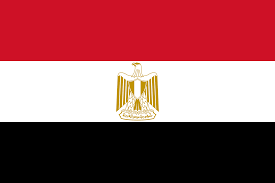RAS EL – SODA TEMPLE
Ras El – Soda Temple On 29 October 1936, diggers working in the Ras el – Soda district east of Alexandria, came across some columns. Excavation of the site was led by the then director of the Graeco – Roman Museum of Alexandria, Achille Adriani, who uncovered the remains of Ras el – soda Temple. It is a small lonic prostyle temple measuring 5 by 7.5 meters, sitting on a podium 1.4 meters high, with a wide staircase in front. It is built of limestone with marble columns. The cella, or inner chamber, has a secondary doorway in the long wall on the eastern side. The temple is dated to the second century CE and was dedicated to Isis and other Egyptian deities. The four columns of the pronaos, or portico, are open to the sides. Some related later structures were found on either side of the temple. Inside the cella there was a small conical marble altar on a high base and two black granite sphinxes. The cella pavement has two marble strips running lengthwise from the main door to a bench at the back. Five marble sculptures were discovered on the bench : one of Isis, two of Osiris – Canopuse , one of Harpocrates. Centered between the four columns of the pronaos, in a wider central intercolumniation in front of the main doorway, stood a marble pillar crowned with a marble foot, in total 1.28 meters high. The Greek inscription on the pillar indicated that the temple was a private foundation by a Roman called Isidoros, who offered it to Isis in order to thank her for having healed his foot after he had fallen from his horse – driven carriage. In the early 1990s, the Supreme Council for Antiquities relocated the temple from its original location, where it was exposed to rising ground waters, to the Chatby Garden in Horreya street, Alexandria, to be opened to the public. Today, Ras el- Soda Temple remains a popular tourist attraction for those interested in life in Graeco – Roman Egypt. The marble sculptures and altar, the granite sphinxes and the marble foot offering are on exhibition in the Antiquities Museum of the Bibliotheca Alexandria. Isis Height : 1.85 m The goddess is standing with her foot on a crocodile, holding a sistrum ( musical instrument) or a sacred pail in her left hand while her raised right arm is entwined with a serpent. Her headdress consists of ears of wheat supporting cow horns framing a sun disc fronted by an uraeus (cobra) in the relief behind which are two ostrich plumes. Harpocrates Heigh : 1.20 m The nude adolescent god raises the index finger of his left hand to his lips. He has a bent knee, moved to one side, with the foot resting on a rock. His garment is draped over a pillar. Hermanubis Heigh : 1.25 m This statue represents a draped athletic male god with his feet standing on an integral plinth and resting against a tree trunk. He is clean shaven with a full head of thick and curly locks on which he is wearing a modius fronted by a stylized palm frond. Osiris Canopus with a Nemes Headress Heigh : 1.07 m The sculpture is in the shape of a jar ; the lid depicts the head of the Egyptian god Osiris crowned with plumes supported by horns, fronted by a sun disc, and flanked on each side by an uraeus. The body is in the shape of a canopic jar decorated with figures of deities. Osiris Canopus with an Atef Crown Heigh : 0.95 m This vase rests on a floral wreath but its head wears the Egyptian Atef crown. The body is covered by a draped costume fronted by a ladder - like motif and there is a sun disc cradled by two uraei.








